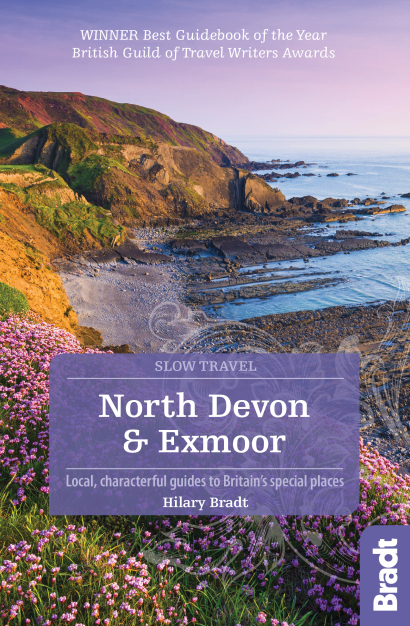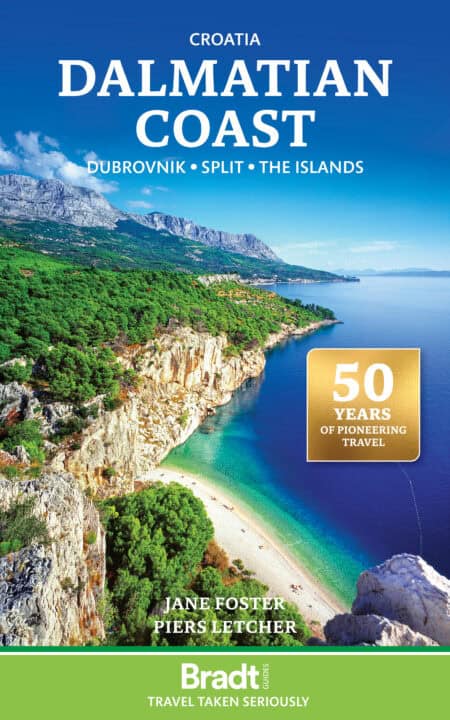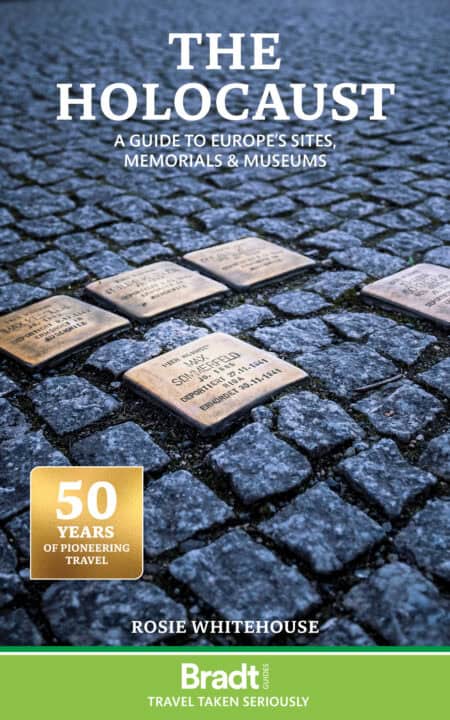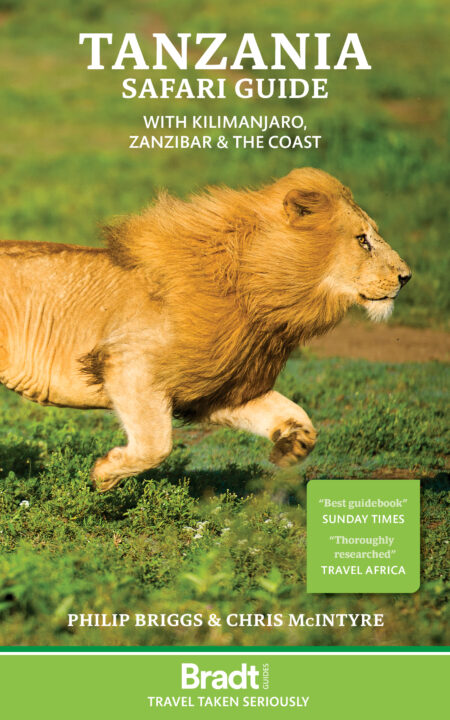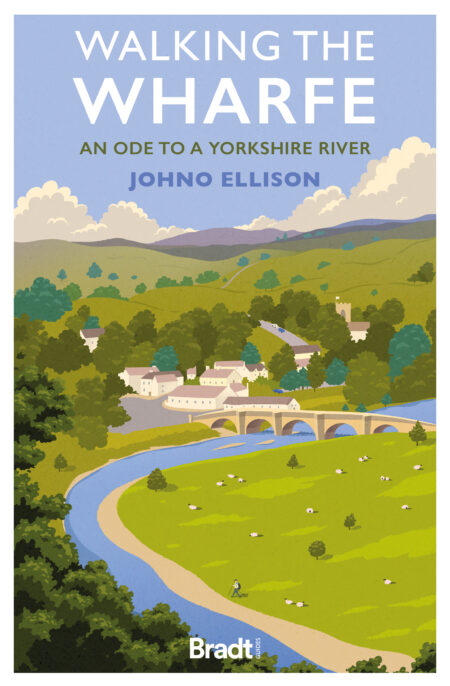North Devon & Exmoor (Slow Travel)
Local, characterful guides to Britain's Special Places
Publication Date: 15th Feb 2019
£10.99 £9.89
Slow North Devon and Exmoor – Expert local tips and holiday advice featuring the best cream teas and pubs, cycling, walking, hiking and wildlife. Includes the International Dark Sky Reserve, local food and accommodation, Exmoor National Park, wildlife and birdwatching, Barnstaple, Braunton, Ilfracombe, Broomhill, Lundy Island and North Devon Coast.
ISBN: 9781784774974
Published: 15th Feb 2019
Edition: 2
About this book
This new, thoroughly updated edition of Bradt’s award-winning North Devon & Exmoor remains the only dedicated general guide to this compelling area. North Devon’s relative inaccessibility has been a deterrent to ugly development, and Exmoor National Park is one of the smallest, least well known, and utterly delightful of all National Parks. The rugged western cliffs around Hartland Point are the most dramatic in Devon and the cliff-top walking some of the best. New to this edition are several nature reserves which didn’t make it into the first edition and more in-depth descriptions of the far western part of Devon abutting the Cornish border. Also included are the Gnome Reserve and the Bakelite Museum – just two of several quirky places in the region – and expanded information on the island of Lundy in the Bristol Channel, as well as unique coverage of the whole of Exmoor National Park straddling Devon and Somerset. Particularly intriguing are the many descriptions of country churches, ‘the storerooms of history’.
The North Devon and Exmoor region is arguably the most scenic in the southwest. No other has this blend of wild rugged coastline, deep river valleys, heather-covered moorland, family-friendly sandy beaches, great surfing and enchanting villages. Some of the prettiest villages in the south west are found here, with cream teas aplenty. Much information is unique to this guidebook, blending descriptions of little-known places and country pursuits with portraits of local characters, past and present. The guide also places special emphasis on car-free travel, walking, local food, pubs and unusual or special accommodation. Whether you like to spend time exploring National Trust properties, discovering gardens, wildlife watching (Exmoor is home to Britain’s largest mammal, the red deer), or indulging in more active pursuits such as coasteering, canyoneering or just a gentle pony trek, Bradt’s North Devon & Exmoor is the ideal companion for a successful visit.
About the Author
Hilary Bradt co-founded Bradt Travel Guides in 1974, but now lives in semi-retirement in Seaton, East Devon. After 40 years of writing guidebooks to Africa and South America, she has embraced her chosen home to the extent of insisting that such a large, varied and beautiful county deserved three Slow guides, not just one. Her first visit to the region was as a child on a pony-trekking holiday on Exmoor – a never to be forgotten experience. A keen walker, she has covered many miles of the South West Coast Path and inland footpaths, and most Saturdays see her taking part in one of Devon’s Parkruns (5k, but she’s appropriately slow). She is a productive member of the South West Sculptors’ Association and lectures regularly on travel-related topics at libraries and literary festivals, both in Devon and further afield.
In 2008 she was awarded an MBE for services to the tourist industry and to charity and in 2009 she received a Lifetime Achievement Award from the British Guild of Travel Writers.
Reviews
‘Eye-opening and wonderful’ India Knight, The Sunday Times Magazine
‘An invaluable inspiration to those who like to walk and discover new things about the region.’ North Devon Journal
‘Contains all manner of little known facts and tales about local characters both past and present.’ Western Morning News
‘Lifts the lid on secret spots in Devon, with out-of-the-way places, local characters and a guide to sustainable tourism.’ Food & Travel Magazine
‘In short, for residents and tourists, the guide is a brilliant addition to the bookcase.’ Devon Life
‘An interesting read which made me want to revisit many of the places it describes. I loved the tales associated with the places visited and could feel the enthusiasm the author has for this part of the country.’ Third Age Matters
Additional Information
Table of ContentsGoing Slow in North Devon & Exmoor
A taste of North Devon & Exmoor, The appeal of country churches, NGS Gardens & Open Studios, Wildlife, Car-free travel, How this book is arranged
Chapter 1 Northwest Devon: The Cornish border to the River Torridge
Getting there & around, The Hartland heartland, The Clovelly area, Bideford & area, South of the A39, Some exceptional churches
Chapter 2 North Devon’s Seaside
Getting there & around, Braunton, the Burrows & Saunton Sands, Georgeham & Croyde, Beaches & headlands: Morte Bay, Ilfracombe & area, Combe Martin & area
Chapter 3 Lundy Island
Getting there, Staying on Lundy, Getting around on Lundy, Making the most of a day visit, Exploring Lundy & its history
Chapter 4 Barnstaple & Inland North Devon
Getting there & around, Barnstaple, North of Barnstaple, South of Barnstaple, Southwest of Barnstaple, Great Torrington & area, Southeast of Barnstaple: between the A377 & A361
Chapter 5 Exmoor National Park
The red deer of Exmoor, Exmoor & the hand of man, Getting there & around, Active Exmoor, Inactive Exmoor, Western Exmoor: to Lynton via Blackmoor Gate,
The coastal triangle, Lynton, Lynmouth & area, Central & southern Exmoor, Porlock & area, The West Somerset coast: Porlock Weir to County Gate, East of Porlock: the National Trust villages
Chapter 6 Minehead, Dunster & the eastern fringes of Exmoor
Getting there & around, Minehead, Dunster & area, Dulverton & area, Outside the National Park: Blue Anchor, Watchet & area
Appendices
Accommodation
Index
